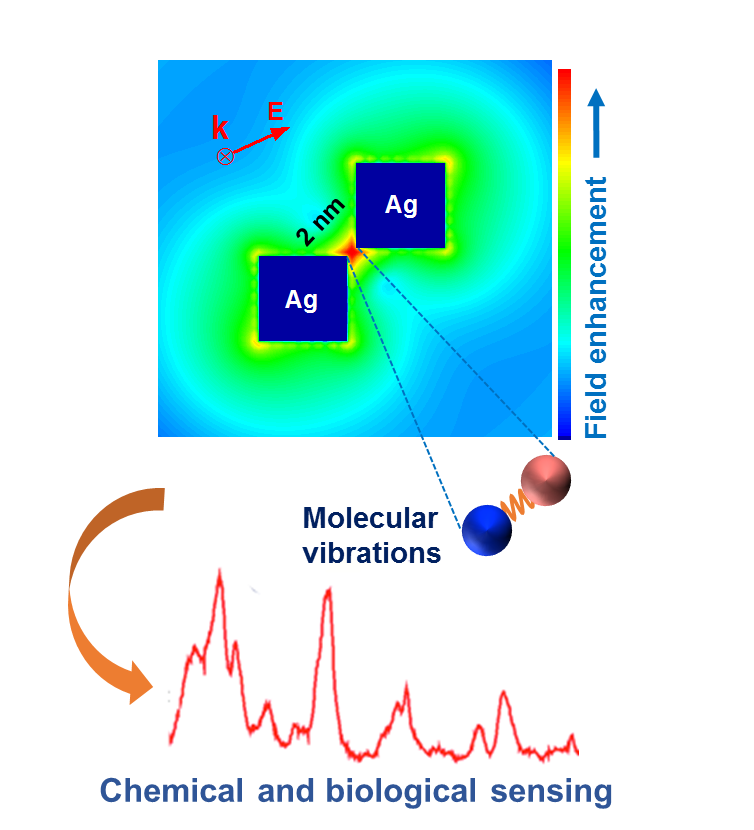Detection of ultralow concentrations of substances requires devices that can provide ultrafast information processing and offer high detection limits. Plasmonic metal nanoparticles, especially those made of gold and silver, offer significant promise to detect substances rapidly and down to the single-molecule level.
This capability is due to so-called “localized surface plasmon resonance.” This property makes the nanoparticles absorb and scatter light highly efficiently when they are exposed to electromagnetic radiation. By narrowing the field, or hot spot, between nanoparticles, where the unknown substance is trapped, precise information could be obtained that is not possible with other detection techniques.
A new study now has advanced silver nanoparticles toward the goal of single-molecule detection. The work – by Nasrin Hooshmand and Mostafa El-Sayed, senior research scientist and professor, respectively, in the School of Chemistry and Biochemistry – was published recently in the Proceedings of the National Academy of Sciences (PNAS). The work was supported by National Science Foundation Division of Chemistry grant 1608801.
Using new models of coupling between nanoparticles, the researchers have achieved tighter hot spots, down to 2 nanometers apart. For metallic nanoparticles with sharp edges, light can be strongly localized around the corners. Therefore, silver nanocubes in edge-to-edge configuration with a 2-nanometer gap give a significantly higher plasmonic response, that is, they absorb and then scatter light between the adjacent silver nanoparticles faster and more efficiently than other configurations.
“These particles can be used in surface-enhanced spectroscopy to design more sensitive optical sensors, which have many applications including single-molecule spectroscopy, biomedical and ultrafast optoelectronic applications,” Hooshmand says. “For instance, to identify trace levels of hazardous materials in security, or to monitor real-time characterization of biomolecular evidence in biological sensing, this finding opens up new possibilities to overcome the limitations of conventional sensors now being used for those measurements.”
For More Information Contact
A. Maureen Rouhi, Ph.D.
Director of Communications
College of Sciences




